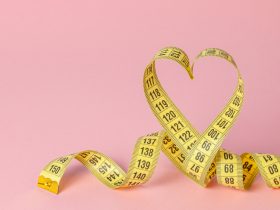You may have considered weightlifting for women if you are trying to lose weight and are unsure of the form of exercise that will be most effective for you.
Find out if weightlifting is effective for weight loss in women and get some useful pointers from this article.
Do you get bigger muscles from lifting weights?
The misconception that weightlifting makes you look big relegated weightlifting, also known as resistance exercise, to the domain of bodybuilders for a long time. While weight training is effective for increasing muscle mass, it does little to promote bulking. Building significant muscle mass requires lifting heavy weights and consuming more calories than you expend, and even then, the process might take months or even years.
In addition, anabolic (muscle-building) hormones like testosterone and growth hormone tend to be in lower supply in women, making it even more difficult for them to bulk up. Genetics, food, body type, exercise load, volume, and intensity are just a few of the factors that can affect muscle growth rate and potential.
Don’t worry, if you start lifting weights, you won’t suddenly explode with muscle mass.
Lifting weights for fat loss
There are three basic strategies to create a calorie deficit, which is necessary for weight loss and fat burning:
- consuming fewer calories than required on a daily basis
- reducing caloric intake through physical activity
- reducing calorie intake and ramping up exercise are both effective strategies
Weight training can help you lose weight, but it’s not the most effective method. Weight training is more efficient at reducing body fat than aerobic exercises like running, cycling, and swimming.
Muscle mass gained through weightlifting, however, can aid in the process of shedding pounds. Muscles help with weight loss because they increase the resting metabolic rate. That’s why it’s recommended to mix up your workout routine with some cardio and some weight lifting.
Weight training, according to the available evidence, also increases your resting metabolic rate, which means you continue to burn calories even after you’ve finished your workout. The metabolic rate boost after exercise has been found to last for up to 72 hours.
Getting started
It’s important to check in with your doctor before beginning any new exercise program to be sure it’s appropriate for your needs. Once you have the all-clear to exercise, you can incorporate it into your routine in a variety of simple ways.
The standard advice is to schedule three to five weight training sessions each week, combined with cardio and recovery days. Considerations including training volume, intensity, recuperation days required, and your schedule will determine the optimal number of sessions.
You can theoretically lift weights every day, but you should rest each muscle group for at least 48 hours afterward. Back and shoulder exercises performed on Monday should be avoided until Wednesday or Thursday.
It is not always preferable to exercise more. It’s not about how many workouts you do, but how well you do them. Even if you can only train twice or three times a week, you can still see progress if you pay attention to your form and choose challenging exercises.
Nutrition
In addition to weight training, a healthy diet is essential for successful weight loss. You can lose weight by lifting weights, but only if you also follow a healthy diet. Calorie deficits can be achieved through a combination of regular exercise and modest dietary reductions. Repeated studies have shown this to be a healthy, long-term approach to slimming down.
It’s also crucial to replenish your body with protein, carbs, and healthy fats if you want to gain muscle and strength.
Regardless of age, ladies of any size can benefit from weightlifting. Actually, it can aid in the pursuit of a trimmer, stronger physique. It can aid in weight loss, help you gain strength and muscle, and lessen your risk of developing chronic conditions. Weight reduction can be aided by doing exercise and eating a healthy, protein-rich diet on days when you focus on strengthening your workout areas with weights. Incorporating some weight training into your fitness routine is good, even if it’s less than the recommended three to five sessions per week.
















Find Us on Socials